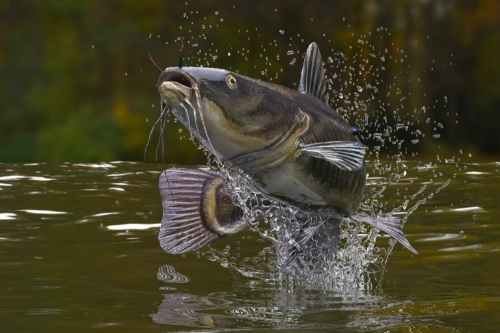Yes! Other fish can be eaten by catfish. Baitfish, shad, and other small fish fall into this category. In fact, baitfish and shad are some of the best catfish baits for maximizing catch rates and keeping catfish going to come back for more.
Catfish have a reputation for being opportunistic feeders. They’ll probably eat anything that fits in their mouth. Catfish come in a variety of species, but only a few are particularly appealing to fishermen. They are omnivorous, eating a variety of plant material as well as aquatic creatures.
They will consume shad, bluegill, perch, tiny carp, buffalo, drum, and any other baitfish that are accessible in their waters.
Table of Contents
What Fish Eat Each Type of Catfish?
Catfish varieties have similar feeding patterns; however, there are some variances as well. They will consume smaller fish that are present in their rivers, lakes, and ponds. Each type of catfish prefers to eat certain types of fish that other catfish do not eat.
Channel Catfish
Carp, drum, perch, and buffalo are among the catfish’s favorite foods. They are also known for their shad consumption. Some people believe that channel catfish consume fewer fish than blue catfish, although this is primarily dependent on the region and food availability.
Because channel catfish like biting on dead fish, many fishermen use dead bait.
Blue Catfish
Blue catfish consume fish on a regular basis. Catfish have a prey size limitation due to their teeth and anatomy, which prevent them from chewing and biting off huge portions of prey.
They require fish that are small enough to fit inside their mouths. Not just the blue catfish, but all catfish species are affected. The chosen prey grows up with the catfish. We need to know what kind of fish they prefer.
Perch, drum, buffalo, and carp are the most common prey for blue catfish. They prefer them, but if the opportunity presents itself, they will consume other fish.
Flathead Catfish
Flathead catfish are known for their voracious appetite for fish. It’s worth noting that, unlike channel and blue catfish, this one prefers to eat fish (especially live ones).
Using live bait to catch them can be quite effective. Drum, bluegill, perch, carp, goldfish, and any other smaller fish accessible are eaten by flathead catfish. Live fish are more likely to be eaten by these creatures than dead fish. Bear that in mind when you’re out looking for them.
In a Pond, Do Catfish Eat Other Fish?
Pond owners and those of us who fish in ponds on a regular basis may be questioning if the catfish we’ve stocked or targeted are actively consuming all of the other fish species.
The simple answer is yes. In a pond, catfish could also consume live fish. Because of these factors, pond managers avoid introducing any catfish other than channel catfish.
The flathead catfish would be a killer, devouring several of the pond’s other fish. In most cases, channel catfish will only eat tiny live fish and occasionally fish eggs in this environment.
What Do Baby Catfish Eat?
If adult catfish can eat certain types of fish because of their size, then what can baby catfish eat?
Little catfish have a narrower mouth and must consume tiny prey to survive. Insect larvae and invertebrates are the most common prey for these young catfish. Some catfish eat the eggs of other fish as well.
Aside from an animal-based diet, baby catfish also consume plant matter. It’s worth noting that when they’re young, they eat algae and other plant-based foods largely.
A baby fish that is small enough could be eaten by an adolescent catfish. When they are large enough to ingest it, they begin to act predatorily.
That is a rare event at first, and they continue to eat insects and plants; however, as they get older, they begin to eat more little fish. When they enter maturity, their diet shifts, and catfish begin to devour the types of fish mentioned before.
Is It True That Catfish Eat Dead Fish?
Some catfish types are more likely to eat dead fish than others. One of the reasons anglers use them as bait is because of this. Catfish prefer baits with a strong odor, such as chunks of dead fish.
Catfish prefer to consume live fish over dead ones in the wild. A recently deceased one, on the other hand, may end up on its plate. If hungry, a channel catfish may even devour a dying fish on the bottom.
If excellent sources of food are not accessible, this can also occur in smaller bodies of water such as ponds. A dead fish, particularly one that is decaying, will almost never be eaten by a flathead catfish. They eat virtually entirely carnivorous animals.
If you’re a beginning catfish fisherman attempting to figure out which bait to employ, bear all this in mind. Not all catfish types have the same eating patterns, so you’ll need to learn a little about them and adjust to the situation if you want to be effective.

